#tondelayo
Explore tagged Tumblr posts
Text



Hedy Lamarr - White Cargo (1942)
#hedy lamarr gif#movie trailer gif#white cargo#40s movies#old hollywood#40s drama#tondelayo#richard thorpe#gif#chronoscaph gif
296 notes
·
View notes
Text
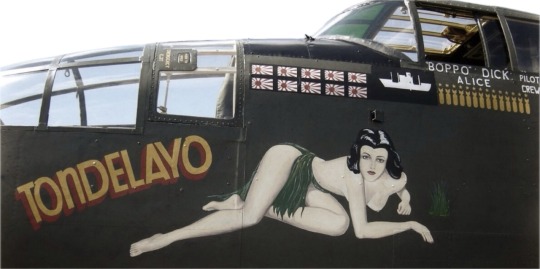
World War II Aircraft Nose Art
TONDELAYO
B-25D-1 s/n 41-30669
500 BS, 345BG 8/23/1943
The most famous aircraft flown by the 345th Bomb Group was TONDELAYO, named after Hedy Lamar's sultry native temptress character in the movie "White Cargo". The name and insignia appeared on both sides as did the Vargas style girl with Hedy Lamar's face, and in fact, the artwork of the girl originally was done by Alberto Vargas and appeared in the ESQUIRE 1943 calendar as Miss June.
#art#airplane babe#Tondelayo#ww2 aircraft#hedy lamarr#nose art#nice ass#hipshot#Alberto Vargas#pin up
3 notes
·
View notes
Text

Tondelayo of the 492nd Bomb Group at Attlebridge
69 notes
·
View notes
Text
‘All we can do for you now’: How Czech sabotage saved a B-17 crew
Read More Military Times “The ‘Tondelayo’ was being knocked about the sky … climbing, diving and making corkscrew patterns in a crazy choreography designed to unsettle the fighters, who were pressing in from all sides,” according to an account by Elmer “Benny” Bendiner, the B-17′s bombardier, in his wartime postscript, “The Fall of Fortresses.” It was July 30, 1943, and the primary targets of…
View On WordPress
0 notes
Photo



Not a drawing today, but went and crocheted Tondelayo’s cute etsie Chickpea! Planning to post a timelapsed video of Chickpea’s creation later on.
ETA: (Timelapse video here!)
12 notes
·
View notes
Text
MOGAI BHM- Day 9!
happy BHM! today i’m going to be talking about the Tuskegee Airmen and Black people during world war 1 and 2!
Black People During World War I-
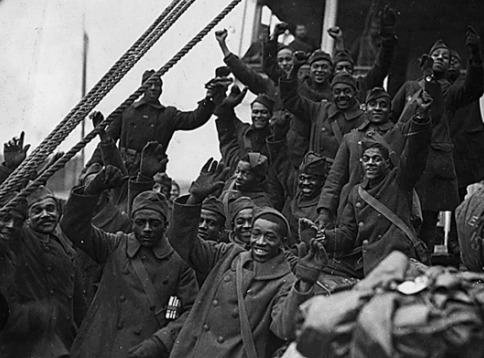
[Image ID: A black-and-white photograph of the Harlem Hellfighters, a group of Black men who served in World War 1. They are all wearing buttoned wool overcoats as part of their uniforms, and are all smiling and pumping their fists in the air in a cheerful, prideful way. End ID.]
Although they were treated inhumanely, many Black men were still eager to serve their country in the military- often because they hoped it would prove their humanity and their worth, as well as show others that they deserved equal rights. Sadly, this wasn’t always a reality.
When World War I was declared, around 20,000 Black men enlisted in military service. Later, that number dramatically increased to 700,000 Black men registered for military service- but the armed forces were segregated, and Black people weren’t allowed to serve in the Marines or the Navy. Additionally, the federal government provided no provisions for creating Black military units, training centers for Black soldiers, or protecting enlisted Black people.
Many Black people protested the injustices of the US Armed Forces, and though military training camps remained segregated, protesting led to the training and registration of 600 Black military officers at Fort Des Moines in Iowa. As suppressed as they were, Black fighters formed Black fighting units that provided vital support to troops on the ground in France.
One such unit was the 369th Regiment. A Black unit of soldiers, this unit was the longest-serving unit in a foreign army, and they never lost a single member- they were the first to arrive at key battles in France, provided integral support, and their success and tenacity earned them the title “Harlem Hellfighters”, as well as the “Black Rattlers”. The 369th Infantry Regiment operated a band that played music and performances for troops, which played a key role in inspiring those troops and greatly increased rapport with French troops. Another notable Black unit, the only to be commanded by Black officers, was the 370th Infantry Regiment, which also provided key battle support.
In France, the 200,000 Black troops deployed there were mainly relegated to labor units rather than fighting units- although they had signed up to fight, they instead were ordered to build railways, unload ships, and become mechanics and stevedores, rather than actually participate in combat.
Black fighters laid the foundations for success in World War I. When the war ended, many Black fighters returned home with a renewed sense of Black identity- and despite segregation, discrimination, and struggles within the Armed Forces, many Black men reported being treated better overseas than in the very country they were fighting for. This caused a huge wave of outcry for change, an outcry which helped usher in the Harlem Renaissance.
Black People During World War II-
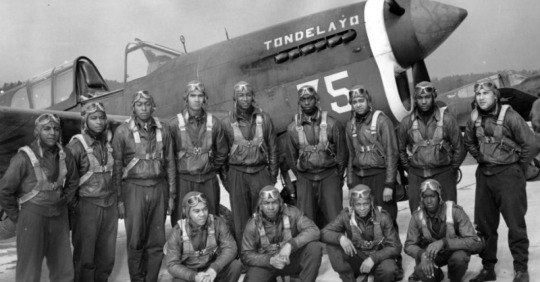
[Image ID: A black-and-white photograph of the Tuskegee Airmen, a group of Black fighter pilots from World War II. The group is organized into two rows, the back one standing and the front one kneeling. They are all dressed in their fighters uniforms, dark jackets and pants, with a parachute strapped over their chest, and they’re in front of a plane labeled ‘TONDELAYO 75′. End ID.]
As war was mounting, the same obstacles that Black soldiers had faced in WWI were still happening in the Armed Forces. Black activists in charge of the March on Washington put pressure on FDR by threatening to protest and march if he didn’t do something about it, which resulted in his signing of Executive Order 8802, which forbade discrimination in the defense industry, a victory for Black activists although discrimination and segregation continued in the Armed Forces throughout the decade.
Mabel Staupers, a Black woman in charge of the National Association of Colored Graduate Nurses, lobbied and advocated against racial discrimination and discriminatory policies in the Army Nurse Corps, which led to an amendment to the Nurses Training Bill barring racial bias- although in practice, the small cap number of Black nurses allowed in the Army Nurse Corps wasn’t lifted until 1944.
Throughout WWII, the Armed Forces were still segregated- and yet, despite that, over 1 million Black Americans served in WWII. Black soldiers served in such famous units as the 332nd Fighter Unit, which shot down more than 110 enemy planes over the course of nearly 200 missions, as well as the 761st Tank Battalion. The first Black soldier to win the Navy Cross was a man named Doris Miller, a steward who, despite not being trained to do so, manned machine guns during the Attack on Pearl Harbor and carried many people to safety. Another famous Black first of WWII was Major Charity Adams, who became the first Black woman to serve in the Women’s Auxiliary Army Corps.
The most famous Black unit of fighters to come out of WWII is the Tuskegee Airmen. Up until WWII, Black people had been completely banned from the Air Force- they had never been allowed to be trained as fighter pilots or been allowed to join air units of the Armed Forces. That changed with the Tuskegee Airmen.
After Black activism pushed to start adding Black pilots to the Armed Forces, a plan was formed to start training a 99th Infantry of Black fighter pilots at Tuskegee Airfield, constructed for that very purpose in Alabama. The Tuskegee Airmen were the first Black aviators in any American unit and war, and within a few years, almost 1,000 Black pilots were trained at the Tuskegee Institute, with thousands more Black personnel working there. The Tuskegee Airmen left a profound legacy and impact on the Armed Forces.
Black soldiers were not the only Black people making massive impacts during WWII- the Black homefront was changing and contributing rapidly, through a campaign known as the ‘Double V Campaign’. Launched by a man named James G. Thompson with his letter titled “Should I Sacrifice to Life ‘Half-American’?” in a Pittsburgh newspaper, the Double V Campaign had two goals- gain victory on the warfront, and on the homefront.
The premise of the Double V Campaign was that Black Americans shouldn’t have to die at war for a country that didn’t see them as human or value that ultimate sacrifice. Black soldiers saw fighting as an opportunity to prove to the USA that they deserved to be seen as citizens, to be treated fairly, and that they were just as valuable to America as white people. Black civilians saw change on the warfront as inspiration to create change on the homefront.
Working with the federal government, a large amount of HBCUs began offering 50+ different classes on subjects relevant to homefront and warfront efforts during wartime, like mechanics, nutrition, photography, electronics, boat building, nursing, among others. These classes mobilized Black localities across the South to become active parts of homefront efforts- sustaining jobs of the soldiers who’d gone to war, producing machines to be sent overseas for soldiers, and more.
Black participation on the homefront during WWII was just as vital as Black participation in fighting, and was a large motivation behind the roots of the Civil Rights Movement. It was during WWII that Black communities started forming schools to teach about civil rights, nonviolent direct action, and literacy, and it was during WWII that student activist groups first started staging sit ins and other forms of protest, which became the heartbeat of the Civil Rights Movement in the following decades.
In 1948, Black activism and political pressure resulted in the signing of an order that completely desegregated the USA’s Armed Forces.
Summary-
During WWII, more than 100,000 Black soldiers served despite huge obstacles including segregation, and famous units like the Harlem Hellfighters emerged
During WWII, the Armed Forces were still segregated. Despite this, more than 1 million Black people served.
Black activism led to bans on racial bias in the defense industry and the Army Nurse Corps., and the Tuskegee Airmen emerged as the famous, first Black aviators ever
On the homefront, HBCUs and Black communities launched the Double V Campaign to gain victory in war and at home, and it included the work of HBCUs with the federal government to offer many courses adjacent to homefront and warfront responsibilities, training and mobilizing thousands of Black civilians on the homefront
The Armed Forces were officially desegregated in 1948
tagging @metalheadsforblacklivesmatter @neopronouns @epikulupu @justlgbtthings @transhaunting
Sources-
https://history.delaware.gov/world-war-i/african-americans-ww1/#:~:text=After%20the%20declaration%20of%20war,had%20registered%20for%20military%20service.
https://www.defense.gov/News/News-Stories/Article/Article/1429624/african-american-troops-fought-to-fight-in-world-war-i/
https://www.archives.gov/research/african-americans/wwi/war
https://www.nationalww2museum.org/war/articles/double-v-victory
https://www.nationalww2museum.org/war/articles/african-americans-fought-freedom-home-and-abroad-during-world-war-ii#:~:text=More%20than%20one%20million%20African,and%20in%20the%20US%20military.
https://www.army.mil/article/233117/honoring_black_history_world_war_ii_service_to_the_nation
https://www.blackpast.org/african-american-history/tuskegee-airmen-blackpast-org/#:~:text=The%20Tuskegee%20Airmen%20were%20the,their%20lives%20during%20that%20period.
https://www.tuskegeeairmen.org/
77 notes
·
View notes
Text
Jim Leslie
B-25J Mitchell 44-28932 "Tondelayo"
The photo was taken at Moffett Field on 21 May 2016. This B-25 was originally built as a B-25J, converted to a TB-25N, and is owned and operated by the Collings Foundation.
87 notes
·
View notes
Video
Tondelayo by David Franks Photography Via Flickr: North American B-25 Mitchell
3 notes
·
View notes
Photo

Hedy Lamarr as Tondelayo (from the 1942 movie, White Cargo) by Jim Silke
280 notes
·
View notes
Text
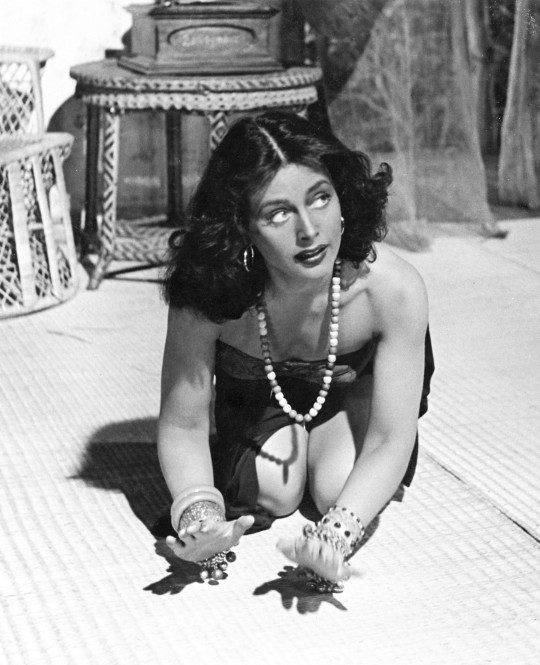
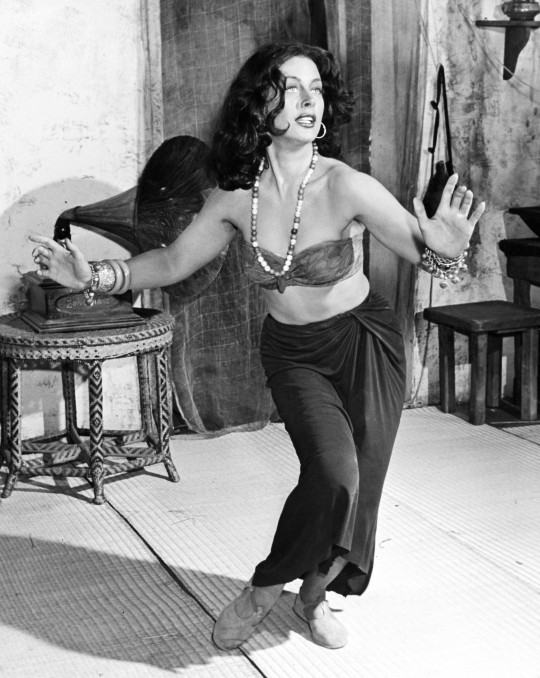


Hedy Lamarr - White Cargo (1942)
1K notes
·
View notes
Photo

Tondelayo by DavidFrank23
69 notes
·
View notes
Photo

Hedy Lamarr as Tondelayo and director Richard Thorpe on the set of White Cargo.
44 notes
·
View notes
Photo










Some of the photos I took during Colling’s Foundation’s Wings of Freedom Tour 2017. In 2016, I just waited for the tour to hit West Lafayette; in 2017 I said “hell with it” and went up to Valparaiso, which is about an hour-and-a-half north of here. Actually went up on Saturday and Sunday; Saturday morning I went up for a flight on the B-17, Nine-O-Nine, and on Sunday evening to catch the planes as they did their tour flights.

Toulouse Nuts just after take-off (Valparaiso).
I was fore-armed thinking that I shouldn’t even try to get shots similar to those I took in 2016; I needed to stay aware of different opportunities as they arose. I decided, too, to take more photos of the “war birds” with other visitors. A couple of those I got last year fall toward the “once-in-a-lifetime” category, and to set out to get “once-in-a-lifetime” shots would likely only result in frustration.

BR 601 making a final loop prior to landing (West Lafayette).
That Spitfire Mk IX is the one in the video posted earlier.
Funny, kinda’, that in 2016, I was a bit unsure of Valparaiso’s location, and wondered if it might be a bit far to travel when the tour would, after all, be (literally) landing “in my own back yard.” Having run out 1,000 miles to see Devils Tower, however, a drive up to Valparaiso just didn’t seem all that much of a bother.

Nine-O-Nine on final approach beyond the US 52 by-pass (West Lafayette).
Once I figure out how to do the page lay-out, I’ll be updating these on the website.
Photos: R. Jake Wood, 2017.
2 notes
·
View notes
Text
G. Verver Following
B-25J Mitchell s/n 44-28932
Collings Foundation B-25J Mitchell s/n 44-28932 in the markings of B-25D s/n 42-31909, Tondelayo, Wings of Freedom Tour, Fort Collins-Loveland Municipal Airport, 14 July 2018.
14 notes
·
View notes



